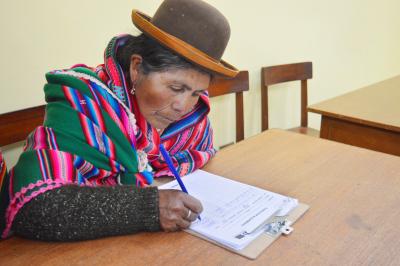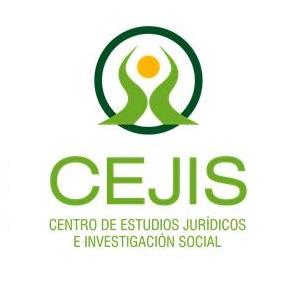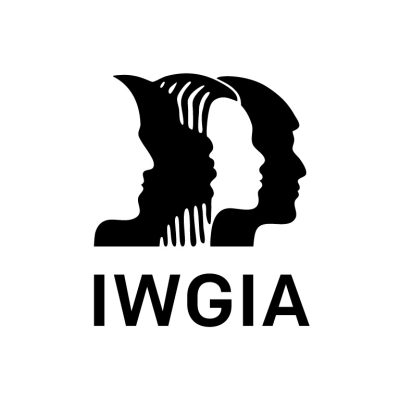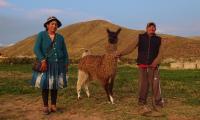Bolivia: What has it meant to be part of the Indigenous Navigator?

In Bolivia, the Indigenous Navigator has been coordinated by Centro de Estudios Jurídicos e Investigación Social (CEJIS). CEJIS has shared their perspective on participating in the INI and implementing the Indigenous Navigator framework and tools.
The lead project coordinator from CEJIS in Bolivia notes that participating in the INI “has been a positive and innovative experience.” The Indigenous Navigator “is a very innovative and complete tool, that allows Indigenous communities and CEJIS to measure compliance with Indigenous Peoples’ rights.” Further, the Indigenous Navigator enables “a more systematic monitoring of the level of recognition and implementation of the rights of Indigenous Peoples, as guaranteed by the UNDRIP, ILOC169, the SDGs, etc.”
As CEJIS engaged with the communities and began the process of introducing the Indigenous Navigator and its tools as well as consultation and consent processes, they also encountered certain challenges. CEJIS shares that, “one of the biggest challenges in the beginning was to understand the questionnaire, which contained many difficult questions.”
The questionnaires of the Indigenous Navigator are a translation of the complex human rights frameworks which relate to Indigenous Peoples, including at its core the UN Declaration on the Rights of Indigenous Peoples. Given the complexity of this legal landscape, the development of a framework which accurately captures the different instruments, which can be tied back to their specific articles, is unavoidably challenging. High-context legal text, and terms such as poverty or property ownership require translation – not literally but conceptually. CEJIS addressed this challenge and reports that, “The team and community members managed to make sense of these difficult questions, and were able to adjust the questionnaires as necessary, adapting some of the high-context legal terminology from the instruments to local, context specific language.” This enabled the community members to grasp the meaning and theme behind the questions and to respond adequately to the questions.
As the communities were sensitised and worked through the questionnaires, they reported back to CEJIS, sharing that they began to recognise that the questions being asked, although difficult, were very important in order for communities, duty bearers, and others to get to know the reality of Indigenous Peoples. “These are important tools — not only for Indigenous Peoples to use the data but also for Human Rights defenders and state agencies to understand the situation of Indigenous Peoples and communities in Bolivia.” shares CEJIS.
As CEJIS continued to implement the Indigenous Navigator’s questionnaires with their constituents and communities, they provided detailed sensitisations and trainings in the framework and use of the tool. These trainings build an understanding of the importance of their rights.
People realised that having information collected by themselves gives them an opportunity to learn about their own situation and how they can monitor whether their rights as Indigenous Peoples are respected
By being sensitised and trained on their rights, a key component of implementing the Indigenous Navigator, the communities came to know and understand their fundamental rights. “By knowing their rights, they are in a better position to demand that the authorities and duty bearers comply with needs for human development.” CEJIS reports.
Implementing the questionnaires was an exciting exercise, and community ownership of the data remains a key component. In reflecting on the data collection process, CEJIS shares that “The community members were excited to see the results from the questionnaires. As a first step, once the data had been collected and analysed, CEJIS presented the results to the Indigenous authorities and subsequently all community members during a general community assembly. “Presenting the results was like showing a photograph that reflects how their rights, as described in the UNDRIP, are currently not being complied with.” Having clear, concrete and powerful results in hand, “helped the communities define which issues they wanted to address through the pilot projects, but they also realised the need to apply for external funding in order to improve their human development.” continues the lead project coordinator at CEJIS.
As an example, once the data had been analysed and returned to the communities in Jach’a Marka Tapacarí-Cóndor, they used the results to bolster their evidence-based advocacy with the local municipality of Pazña. This resulted in the strengthening of their communities’ relationship with the municipality, and through this alliance, and supported by the survey process, representatives from the local government have become more active and engaged. Members of the municipality have participated in several workshops and meetings while closely following the process and developments reaped from the Indigenous Navigator, especially in relation to the development of pilot projects. Building relationships is essential, but it also leads to concrete development — as a result of this alliance, the municipality provided financial funding to scale up one of the pilot projects —directly multiplying the benefit to the community.1 The communities have also showcased their results in briefs and reports that have helped make the data and issues more accessible.2
1. The article on the project and the municipality’s support can be read here:
2. Tamburini, Leonardo, Ángela Ágreda, Vania Sandoval, and Carla Illescas. 2019. Indigenous Rights Monitoring Results in Lomerío And Tapacarí-Cóndor Apacheta. PDF. 1st ed. CEJIS.

El Centro de Estudios Jurídicos e Investigación Social (CEJIS)


